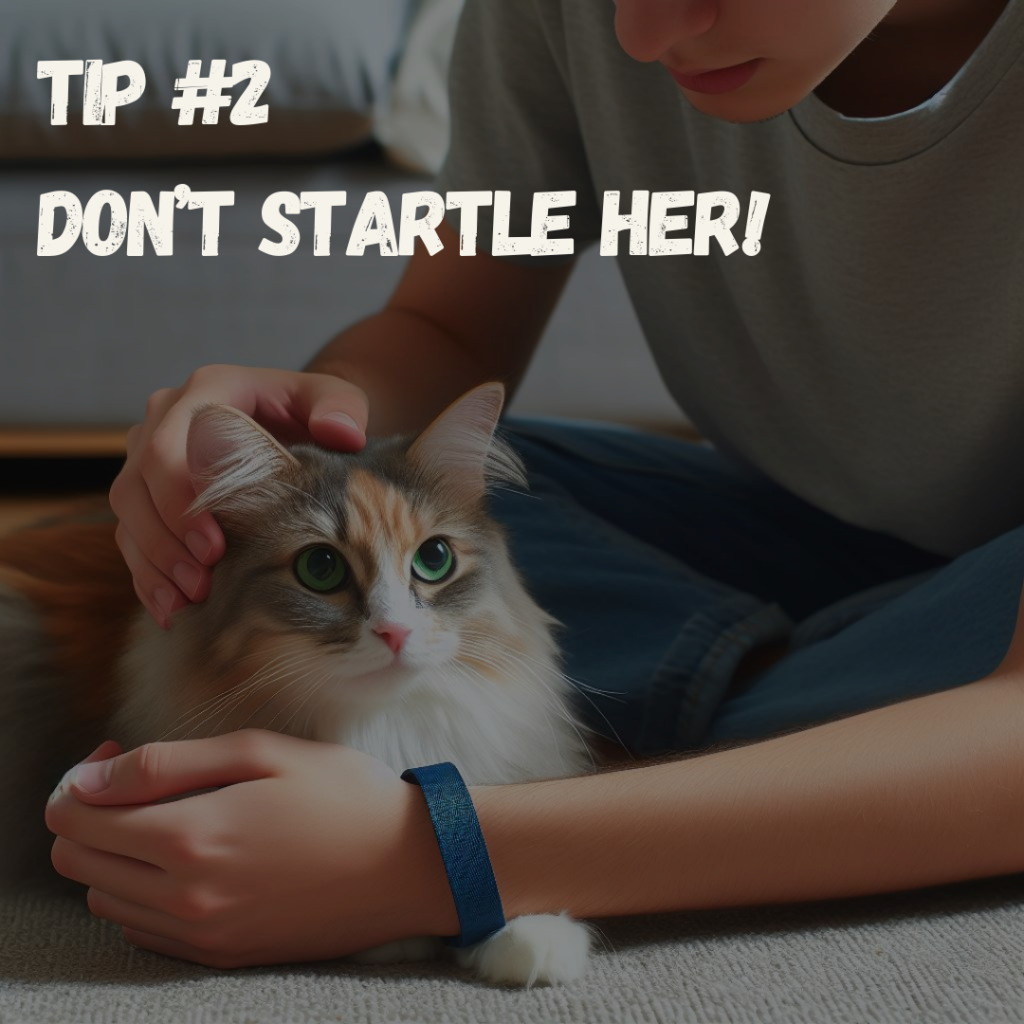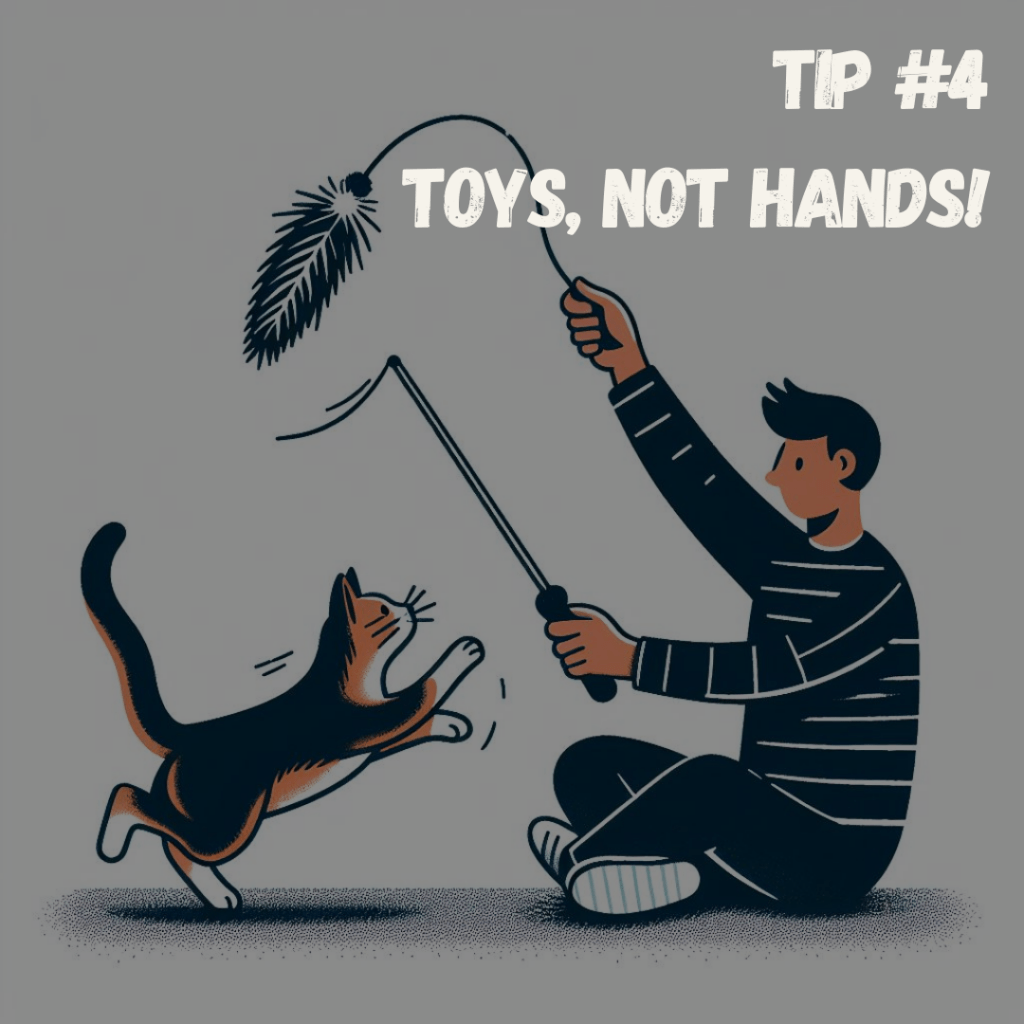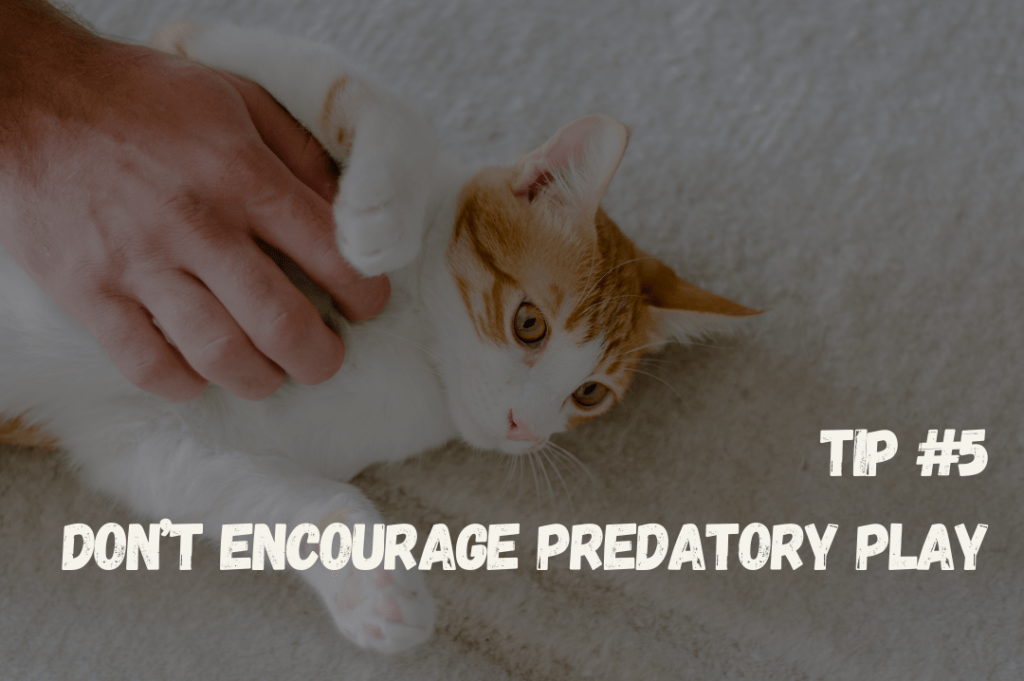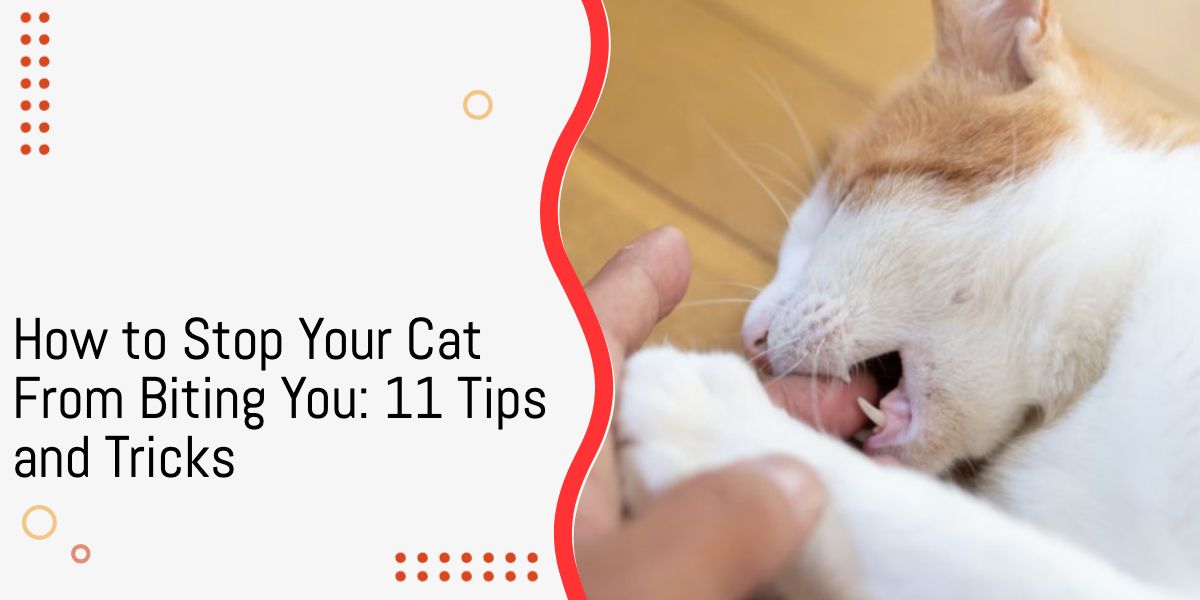When your pet is a natural-born predator, you should expect a few playful bites now and then.
You shouldn’t, however, accept a behavioral issue and roll with it.
In this guide, you’ll find 11 simple tips and tricks that will show you how to stop your cat from biting you. Read on to deal with the problem once and for all!
Table of Contents
1. Read Her Body Language

Cats don’t always want to be touched. Get close at the wrong time, and your cat will (rightfully) ask you to back off.
How do you know when your furball wants to be left alone?
The answer is complicated because each cat is different, and you must learn to read and decode your cat’s body language.
Generally, a crouched position, a tucked tail, dilated pupils, tense limbs, and tufted hair are warning signs.
2. Don’t Startle Her

Even if the pose is giving you the green light to get close, you still need to be wise about approaching your cat.
Sneaking up on a cat is a major no-no. Instead, you want to approach slowly and gently.
If you’re going to pick your pet up, make sure you’re holding her with two hands so that she feels safe and comfortable.
3. Keep Your Pets Short and Sweet

Okay, so you’re now ready to pet your cat.
Here’s the golden key for calm, bite-free pets: Most cats like brief, low-intensity interactions. Overdo it, and the cat’s mood will shift in a second!
To stay on the safe side, pet the cat gently for a few seconds, and then stop.
Does your kitty nudge your hand? Go ahead and pet her some more. Otherwise, your quality time is over. You can try again later, giving your cat short but frequent petting sessions.
Of course, it’s also wise to know the acceptable areas for petting. Generally, the belly and tail are off-limits.
4. Never Use Your Hands as Toys

Sometimes, cats bite not because they’re irritated but because they’ve got nothing better to do. Playtime is a good outlet for all that extra energy.
You could be tempted to use your hands. Maybe you’ll move your fingers quickly to tease your cat.
But that’s less than ideal.
Cats play with their hands and mouths. So, if you let them treat your hand as a toy, odds are, you’ll get bitten and/or scratched.
Toys on strings can help you put some distance between your cat’s sharp teeth/claws and your skin.
Read More: Do Cats Get More Affectionate With Age?
5. Don’t Encourage Predatory Play

Suppose your cat already sees your hand as a toy and starts biting. What now?
You want to shut down this behavior quickly. Try to stay calm and move your hands away.
Make sure everyone in the household knows how to react properly. No one should be showing the kitty that it’s okay to play rough with people’s limbs!
6. Reinforce Good Behavior

It’s not enough to shut down predatory play. You also want to reinforce good behavior.
So, every time you enjoy a gentle play session with your kitty, give her a treat.
7. Click-Train Replacement Behaviors

What if your cat doesn’t do any gentle play worth rewarding/reinforcing?
Try using a clicker to train your pet on replacement behaviors. For instance, you could teach your cat to sit on command.
This way, you can quickly bring predatory play to a halt with one command.
8. Pamper Your Furball With Chew Toys

You won’t always be there to provide short (but frequent) pets and play sessions. People need to work, after all.
That’s where cat toys come in.
For one, the toys will help your kitty release some pent-up energy. Plus, if your cat really needs to chew on something, a plushy can be the perfect victim.
Feel free to rotate the selection as long as your cat has 4–5 safe toys available to her at all times.
9. Spray Some Pheromones

Some pets bite when stressed. A sudden change to the environment will do that to a kitty.
Try using a pheromone diffuser, like Feliway or Comfort Zone, to calm your pet down. Keep in mind that this is a short-term fix, though.
Users Also Check: 15 Adorable Angry Cats Who Refuse To Smile For The Camera
10. Consider Getting Another Kitty

When adopting young kittens, two is sometimes better than one. That’s especially true when the kitties are from the same litter.
The main idea is to give your cat a friend who shares her play modes and tendencies.
Ambushes, kicks, scratches, and bites are less of an issue between siblings. As long as they’re playing, it’s alright.
You still need to watch out for serious signs of aggression between your house cats, though.
11. Know When to Seek Professional Help

Cats could resort to biting when they’re in pain. And it’s definitely not okay to “train” your cat out of communicating that she’s in pain or seriously scared.
Take your cat to the vet for regular checkups. Let them know that your furball is having biting issues. If there’s an underlying physical concern, the vet should be able to help sort things out.
However, if it’s all behavioral, you should consult a professional trainer.
Before We Go
Cats sometimes bite unprovoked. Other times, they do it because they’re scared, stressed, or bored.
But no matter what you do, you should never resort to physical punishment! Doing so will only ruin your relationship with your cat and lead to more fear-induced reactions.
Finally, you need to know that training your cat to stop biting will take time.
Most likely, you’ll get bit a few times during the training. When you do, remember to clean the area well and see a doctor if the wound looks bad.

